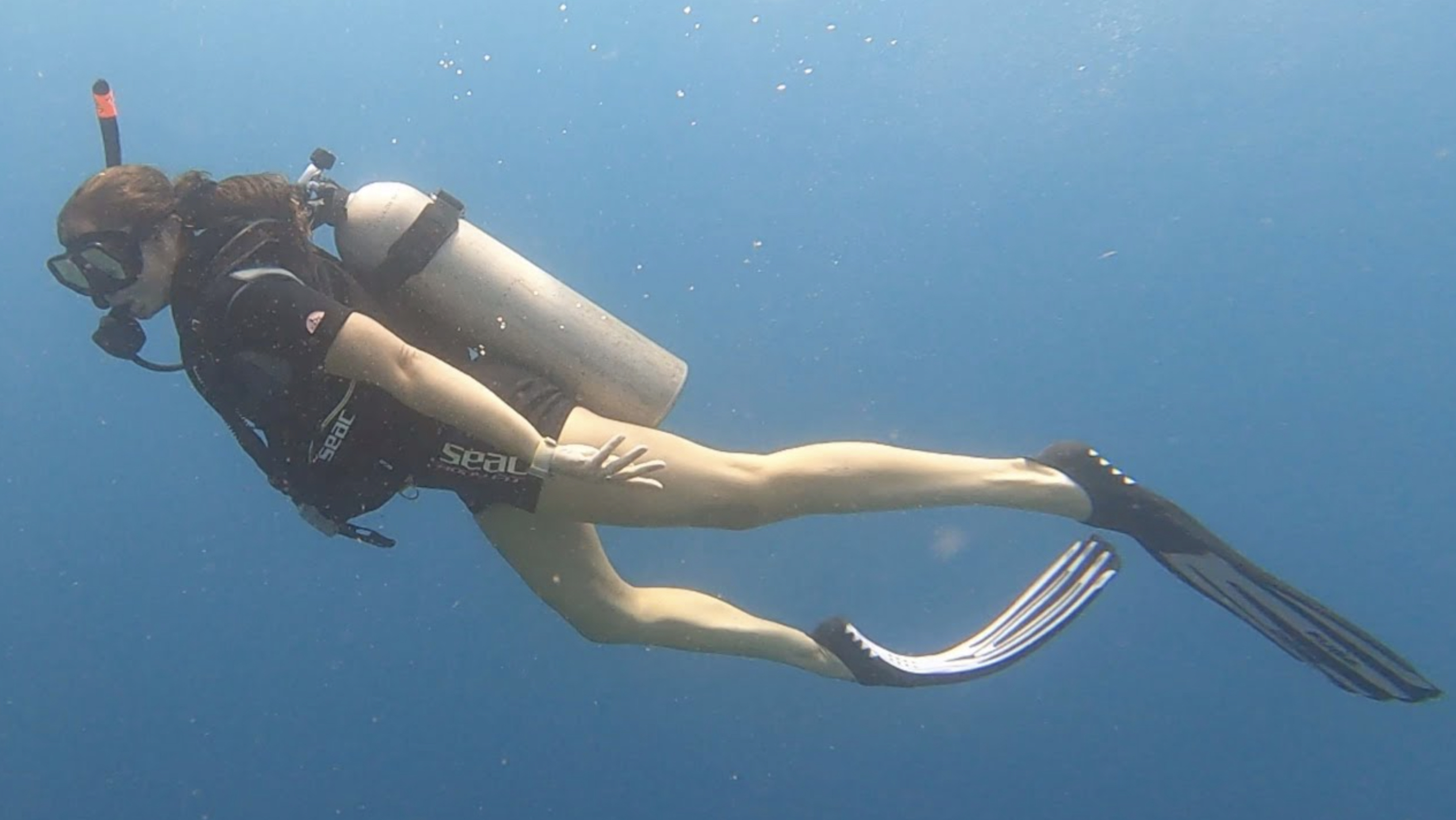Scuba Girl Video Leak Unveiling the Dangers of Digital Privacy Breaches in the Creator Economy
In the digital age, personal privacy and online reputation have become precarious commodities. Social media platforms, video‐sharing websites, and cloud storage services offer unprecedented opportunities for creative expression and personal branding. Yet with these opportunities come significant risks: once content is uploaded, control over its distribution can easily slip away. The recent “Scuba Girl” incident—where private scuba‐diving videos of an individual nicknamed “Scuba Girl” were illicitly leaked—has sparked heated debate across social, legal, and technological spheres. This article examines the multifaceted dimensions of the Scuba Girl video leak, exploring how it occurred, its impact on the individual and community, the legal and ethical frameworks at play, and the measures that content creators and platforms can adopt to safeguard personal media. By dissecting this case in seven comprehensive sections, we aim to illuminate the broader implications of such privacy breaches and chart a course toward more secure digital environments.
Content
Background and Rise of the “Scuba Girl” Phenomenon
Before the leak, “Scuba Girl” was best known as an adventurous content creator who documented her underwater explorations. Cultivating a niche in marine life photography and freediving tutorials, she attracted a growing audience on platforms such as YouTube, Instagram, and TikTok. Her brand combined high‐definition underwater footage with educational commentary on marine conservation, resulting in over 500,000 followers across channels. The authenticity of her work—often filmed from a first‐person perspective with compact action cameras—resonated with fans, who celebrated both the technical prowess of her videography and her passionate advocacy for oceanic ecosystems.

By early 2025, her signature style—close‐up shots of coral reefs, playful interactions with reef fish, and motivational narration about environmental stewardship—had become a blueprint for emerging underwater content creators. As her popularity rose, she began using subscription‐based services and private cloud storage to host behind‐the‐scenes footage for premium subscribers. These private videos, intended for a select audience, included candid moments, equipment testing, and personal vlogs that offered deeper insight into the challenges of filming underwater. Crucially, these files were meant to remain confidential, accessible only via encrypted, subscriber‐only links.
Anatomy of the Video Leak: How Private Videos Became Public
The leak unfolded in late March 2025. A malicious actor—either an external hacker or a disgruntled insider—gained unauthorized access to Scuba Girl’s private video repository. While the precise vector remains under investigation, preliminary cybersecurity analyses suggest one or more of the following vulnerabilities were exploited:
Scuba Girl Video Full in 1080p HD with Stunning Details
Scuba Girl Video HD 1080p Steamy and Daring Moments
Weak Access Controls: Although Scuba Girl used password‐protected storage, her passwords may have lacked sufficient complexity, making them susceptible to brute‐force or credential‐ stuffing attacks.
Third‐Party Plugin Exploit: The content management system (CMS) underpinning her subscription portal used a third‐party video player plugin. A zero‐day vulnerability in this plugin may have allowed directory traversal or remote code execution, granting attackers entry to the server’s file system.
Social Engineering: Attackers often bypass technical safeguards by manipulating individuals. A sophisticated phishing campaign targeting Scuba Girl’s team could have yielded administrator credentials.
Once inside, the perpetrator exfiltrated dozens of raw and edited video files and uploaded them to public video‐sharing sites and peer‐to‐peer networks. Within 24 hours, the unauthorized footage had been viewed tens of thousands of times, circulated through fan communities, and discussed extensively on diving‐enthusiast forums.
Personal and Psychological Impact on the Content Creator
The aftermath of the leak has been emotionally taxing for Scuba Girl. Content that was crafted in private—moments recorded in vulnerable solitude, candid reflections on personal challenges, and intimate conversations with close collaborators—was suddenly exposed to a global audience. Victims of such privacy breaches frequently experience shock, anger, and a profound sense of betrayal. In Scuba Girl’s case, she reported increased anxiety, disrupted sleep patterns, and a reluctance to engage with her previously supportive online community. According to psychological research on privacy violations, such events can precipitate long‐term stress disorders, feelings of helplessness, and reluctance to share personal content in the future. Moreover, the leak threatens her professional livelihood: potential brand partners and sponsors may reassess collaborations, fearing association with controversy, while premium subscribers may demand refunds or cancel subscriptions due to the perceived devaluation of exclusive content.
Legal and Regulatory Considerations
Privacy violations in digital media raise complex legal questions. Depending on jurisdiction, unauthorized distribution of personal videos can contravene multiple statutes:

Copyright Law: If Scuba Girl retained copyright over her videos, unauthorized copying and public distribution infringe on her exclusive rights to reproduce and distribute her work.
Privacy and Personality Rights: Many regions recognize “personality rights” or “rights of publicity,” protecting individuals from exploitation of their likeness. In the European Union, for instance, the General Data Protection Regulation (GDPR) enshrines individuals’ rights to control personal data, which can extend to audiovisual recordings.
Computer Misuse Acts: Laws such as the U.S. Computer Fraud and Abuse Act or the U.K. Computer Misuse Act criminalize unauthorized access to computer systems.
In response, Scuba Girl has engaged legal counsel to pursue takedown notices under the Digital Millennium Copyright Act (DMCA) in the United States and corresponding “notice and action” procedures in other territories. She is also exploring claims for damages related to emotional distress and reputational harm. Challenges remain: identifying and prosecuting anonymous online actors requires time‐consuming forensic investigations, and international jurisdictional issues can stymie legal recourse when content is hosted in jurisdictions with lax enforcement.
Platform Responsibilities and Industry Response
The Scuba Girl leak has catalyzed discussions among video‐hosting platforms and cybersecurity professionals. Major platforms like YouTube and Vimeo have expedited takedown requests, but the decentralized nature of the internet means copies often reappear under different URLs. In response:

Enhanced Verification for Takedowns: Platforms are collaborating with rights‐holder organizations to streamline rapid removal of infringing content, even when distributed via multiple mirrored uploads.
Improved Reporting Mechanisms: User interfaces now offer more intuitive ways for creators to report leaks of private content, reducing friction in the reporting process.
Mandatory Two‐Factor Authentication (2FA): Many services are rolling out 2FA as a requirement for accounts hosting sensitive media, minimizing risks of credential compromise.
Encrypted End‐to‐End Storage Options: Emerging cloud providers are offering client‐side encryption, ensuring that even platform administrators cannot access unencrypted files.
Nonetheless, experts warn that technological solutions alone are insufficient. Platforms must foster a culture of privacy respect, ensure swift legal support for victims, and invest in automated monitoring tools that detect unauthorized sharing at scale.
The Scuba Girl video leak serves as a stark reminder of the fragility of digital privacy. To mitigate risks, content creators and platforms should adhere to a multilayered security strategy:
Strong Authentication: Employ complex, unique passwords and enforce multi‐factor authentication on all accounts.
Regular Security Audits: Conduct vulnerability assessments of content management systems, plugins, and APIs to identify and patch weaknesses.
Private Key Management: Use client‐side encryption keys stored locally rather than on cloud servers to prevent unauthorized decryption.
Digital Rights Management (DRM): Integrate DRM solutions that restrict unauthorized copying and sharing of video streams.
Legal Preparedness: Maintain relationships with legal professionals versed in digital media law to expedite takedown requests and pursue infringement claims.
Community Education: Inform subscribers about privacy risks, discourage password‐sharing, and clarify terms of service relating to private content.
In the evolving landscape of online content creation, the balance between openness and privacy remains precarious. The Scuba Girl incident underscores the need for heightened vigilance among creators, robust protective measures from platforms, and supportive legal frameworks that deter malicious actors. By learning from this case, the digital community can move toward a more secure environment—one in which creative expression flourishes without compromising personal dignity or privacy.
Breaking News -Sajal Malik Video A Deep Dive into Privacy Breach and Digital Consent Violations
Arovi Nusrat Ridhi Video A Case Study on Privacy Breach, Digital Consent, and Social Consequences
Ibu Rumah Tangga Video Navigating Privacy, Popularity, and the Power of Personal Content in the Digital Age
Ajaz Khan Video Leak A Controversial Clash Between Privacy and Public Curiosity
Steezy Sammy Video Leak A Digital Invasion of Privacy and Its Societal Impact
Lisa Mariana Video A Critical Examination of Digital Privacy and the Ethics of Leaked Personal Content
Gangu Chettri Kanda Video A Wake-Up Call on Digital Privacy and Consent in the Age of Viral Media